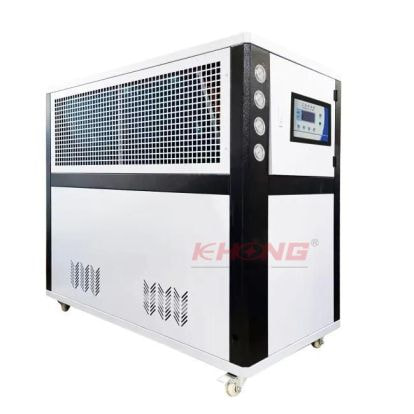What Should You Know About Industrial Refrigeration?
An Overview of Industrial Refrigeration
Industrial refrigeration is crucial for the cooling of large-scale environments and systems, ensuring product preservation, maintaining lower temperatures, and facilitating numerous industrial functions. It finds extensive application in sectors such as food processing, chemical production, pharmaceutical manufacturing, and storage facilities.
The Mechanics Behind Industrial Refrigeration
The operation of industrial refrigeration is based on the principle of heat removal from a designated area or substance, transferring that heat elsewhere, primarily via a refrigeration cycle. This cycle comprises a sequence of processes that effectively absorb heat at lower temperatures and dissipate it at elevated temperatures.

Core Components of an Industrial Refrigeration Setup
An industrial refrigeration system is composed of several key components that perform essential functions in the refrigeration cycle:
Evaporator: This component absorbs heat from the area being cooled, leading to the evaporation of the refrigerant.
Compressor: It increases the pressure and temperature of the vaporized refrigerant.
Condenser: This unit releases the absorbed heat into the environment, allowing the refrigerant to condense back into liquid form.
Expansion Valve: It lowers the pressure of the refrigerant, preparing it for the next cooling cycle in the evaporator.
Understanding the Refrigeration Cycle
The refrigeration cycle entails four main phases:
Evaporation: In this stage, the refrigerant vaporizes after absorbing heat from the space or item being cooled.
Compression: The vaporized refrigerant is compressed by the compressor, which raises its pressure and temperature.
Condensation: The high-pressure vapor moves into the condenser, where it sheds heat and transitions back to liquid form.
Expansion: After passing through the expansion valve, the refrigerant cools down and decreases in pressure before returning to the evaporator.
Diverse Refrigerants in Industrial Processes
Various refrigerants are utilized within industrial refrigeration systems, each possessing unique characteristics and suited to specific applications. Noteworthy examples are ammonia (R717), carbon dioxide (R744), and a range of hydrofluorocarbons (HFCs). Ammonia is favored for its effectiveness and cost-efficiency, while carbon dioxide is increasingly chosen for its environmentally friendly qualities.
Temperature Regulation Techniques in Industrial Systems
Temperature within industrial refrigeration systems is managed through sensors and thermostats, which constantly monitor and adjust conditions to adhere to the required parameters. The system modifies refrigerant flow and compressor operations to guarantee consistent cooling results.
Benefits of Industrial Refrigeration
Adopting industrial refrigeration systems yields multiple advantages:
Preservation: It enhances the safety and quality of perishable items by decelerating spoilage and inhibiting bacterial growth.
Energy Efficiency: Contemporary systems are engineered to optimize energy use and reduce operational expenditures.
Scalability: Industrial refrigeration is versatile, catering to numerous applications ranging from small storage solutions to expansive processing plants.
Reliability: These systems consistently deliver dependable cooling essential for industrial processes.
Applications of Industrial Refrigeration Across Industries
Industrial refrigeration serves a multitude of purposes within various sectors:
Food and Beverage: This technology preserves the quality and safety of food items during production, storage, and transport.
Chemical and Pharmaceutical: It maintains specific temperature settings crucial for producing and storing sensitive products.
HVAC Systems: Industrial refrigeration is integral to large-scale air conditioning and climate regulation in commercial and industrial facilities.
Cold Storage: It facilitates long-term product preservation in low-temperature settings.
Essential Maintenance for Industrial Refrigeration Systems
Inspection: Conducting routine checks for signs of wear, leaks, or other complications within components.
Cleaning: Keeping crucial elements like evaporators and condensers clear of dirt and buildup.
Lubrication: Ensuring moving components are adequately lubricated to minimize wear and friction.
Calibration: Regularly confirming that sensors and controls are accurate in temperature management.
The Environmental Considerations of Industrial Refrigeration
Modern industrial refrigeration systems focus on efficiency and environmental sustainability. By utilizing eco-friendly refrigerants, implementing advanced control technologies, and committing to ongoing maintenance, businesses can successfully reduce both energy use and greenhouse gas emissions.
Final Thoughts
In summary, industrial refrigeration plays an essential role in a variety of sectors by delivering effective cooling solutions. Gaining insight into the fundamental components, operational aspects, and maintenance requirements of these systems is vital for guaranteeing optimal efficiency and long-term sustainability in diverse industrial applications.


